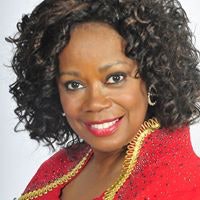Experts believe that without a strong STEM workforce, America could lose its position as the world’s preeminent power. However, America is facing a STEM labor shortage, and part of the reason is racial. African Americans are underrepresented in STEM jobs, and Black students leave STEM majors at nearly double the rate of whites. The problem has roots at the K-12 level: while 15% of public school students are Black, only 7% of the STEM teacher population is.
On Wednesday, Alabama A&M University, the largest HBCU in the state, launched an effort to tackle the problem: AAMUTeach, a program allowing STEM majors to get a secondary school teaching certification while earning a bachelor’s, without any additional time or cost.
 Kim Hughes, director of the UTeach Institute at the University of Texas
Kim Hughes, director of the UTeach Institute at the University of Texas
AAMUTeach is Alabama A&M’s adaptation of the UTeach Institute’s program, developed 25 years ago on UTexas’s Austin campus. UTeach seeks to attract STEM students who never would have considered teaching to the profession in order to address shortages. The project is being funded by a $2 million grant from the Alabama STEM Council, part of a larger package of spending to start UTeach programs at six schools in the state. Alabama A&M is expected to produce up to 530 STEM teachers during the four-year grant period, starting with a cohort of 100 this August.
UTeach is designed to make it easy for STEM majors to explore a teaching career. It starts as early as freshman year, with two single credit courses in which the student learns to teach inquiry-based STEM lessons and then gets to practice at real schools. If the student likes teaching, they can move to the rest of the program. According to Hughes, around one-third of students elect to continue, a high percentage considering that many were initially unsure about teaching.
The rest of the program consists of six to eight additional courses, culminating in a typical one-semester student teaching experience. UTeach students don’t take traditional teacher prep courses like ed psych, classroom management, and assessment, but those topics are integrated into the classes that they do take, which focus specifically on STEM pedagogy.
UTeach has been an extremely successful model, with programs at over 50 schools in over 20 states. However, Alabama A&M will be just the fourth HBCU to have a UTeach program, after Norfolk State, Virginia State, and Prairie View A&M.
 Dr. Vernessa Edwards, an assistant professor of physics at Alabama A&M and a co-director of AAMUTeach
Dr. Vernessa Edwards, an assistant professor of physics at Alabama A&M and a co-director of AAMUTeach
“We pride ourselves in what we already have in STEM and education,” she said. “This is a great fit for us to do more of what our state needs and what our nation needs.”
The $2 million award is higher than the typical initial funding for UTeach programs by around $600,000, said Hughes. Around a quarter of the money will go directly to help students, including tuition reimbursement for the initial two courses and scholarships later on. There will also be funding to cover books and other materials, as well as travel to and from student teaching placements.
AAMUTeach also aims to offer supports that will help students finish the program and stay in the teaching profession after graduation.
“Because the numbers are low, our education students feel as if they’re trying to overcome mountains by themselves,” said Dr. Nathan Blom, assistant professor of secondary education at Alabama A&M and the education co-director of AAMUTeach. “UTeach is going to give them a support network so they know they’re not alone.”
This network will include a dedicated AAMUTeach advisor, mentorship from professors, and support from student peers. AAMUTeach will also provide tutoring as well as test preparation to ensure that its students are able to move into the workforce quickly.
Early response to the program has been strong.
“Already, I’ve had students asking me, ‘I’m a junior, can I still do this?’” said Edwards. “We even had a grad student who said she wanted to know if she could become a part of the UTeach program.”
(The answer is yes. The program offers multiple entry points.)
Experts cheered the launch but cautioned that it was only a partial solution.
Dr. Lou Matthews, director of mathematics and science for Urban Teachers, a teacher training nonprofit, called the program “phenomenal,” but argued that it was also important to recruit teachers from non-traditional areas. Unrecognized talent, he said, can be found in community groups, homeschooling environments, Black fraternities and sororities, and even barbershops.
Although Blom agreed that UTeach is not a panacea for STEM disparities, the program still gives him hope.
Right now, we’re in a crisis. [But] I’m very optimistic in making a dent in this huge problem that’s facing us,” said Blom. “Students need to see teachers who look like them in the classroom. And A&M is so uniquely positioned to do that.”
Jon Edelman can be reached at [email protected]














